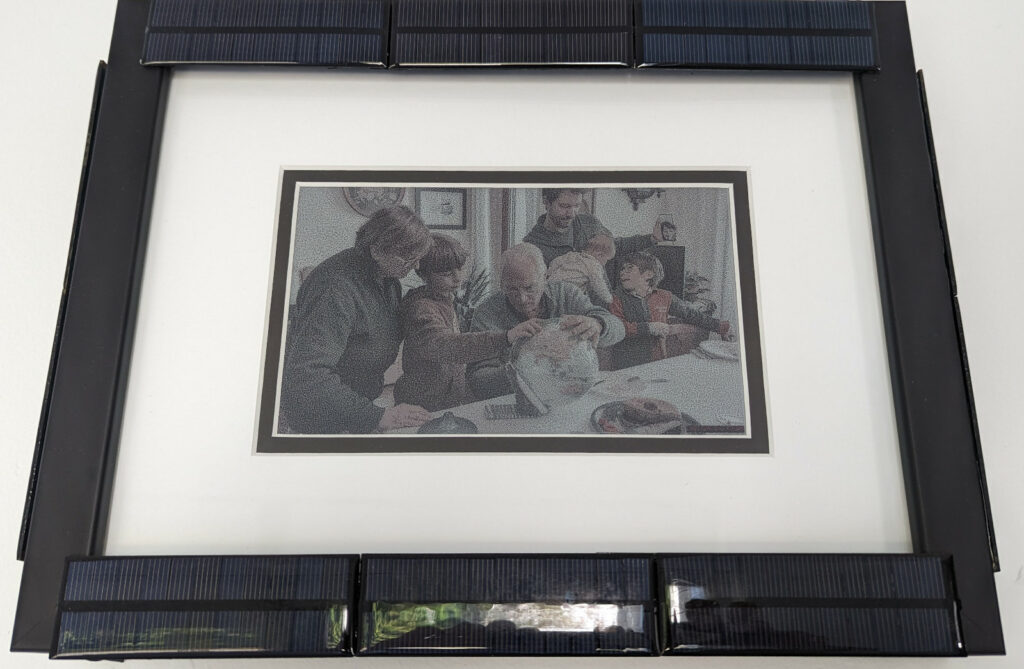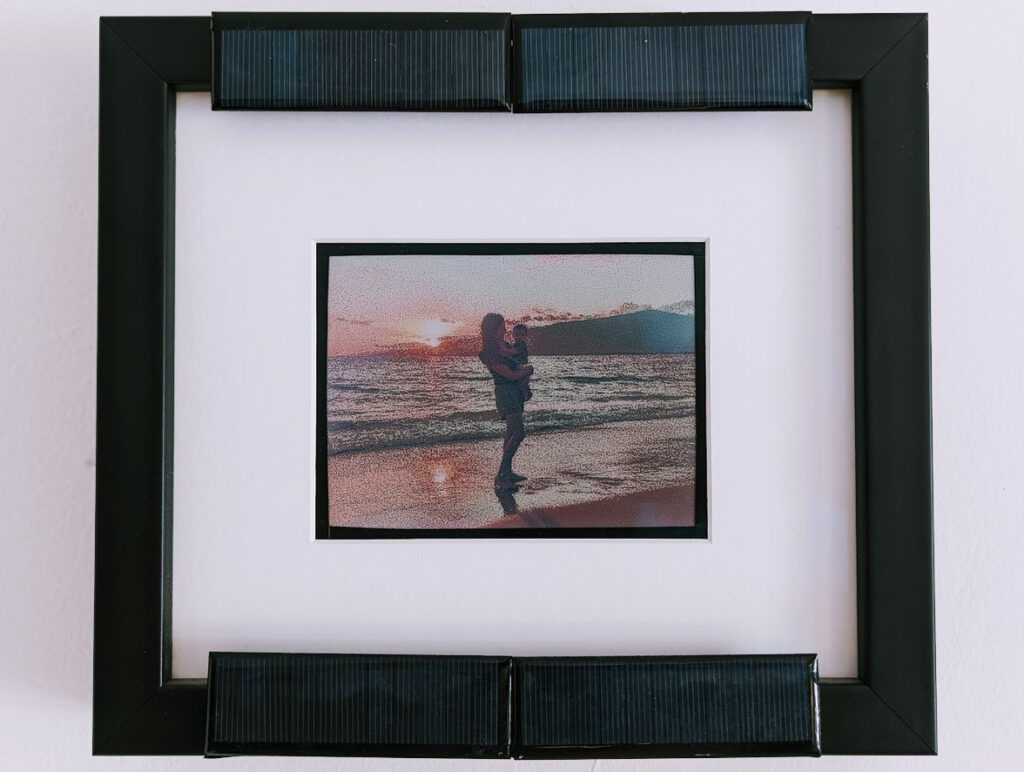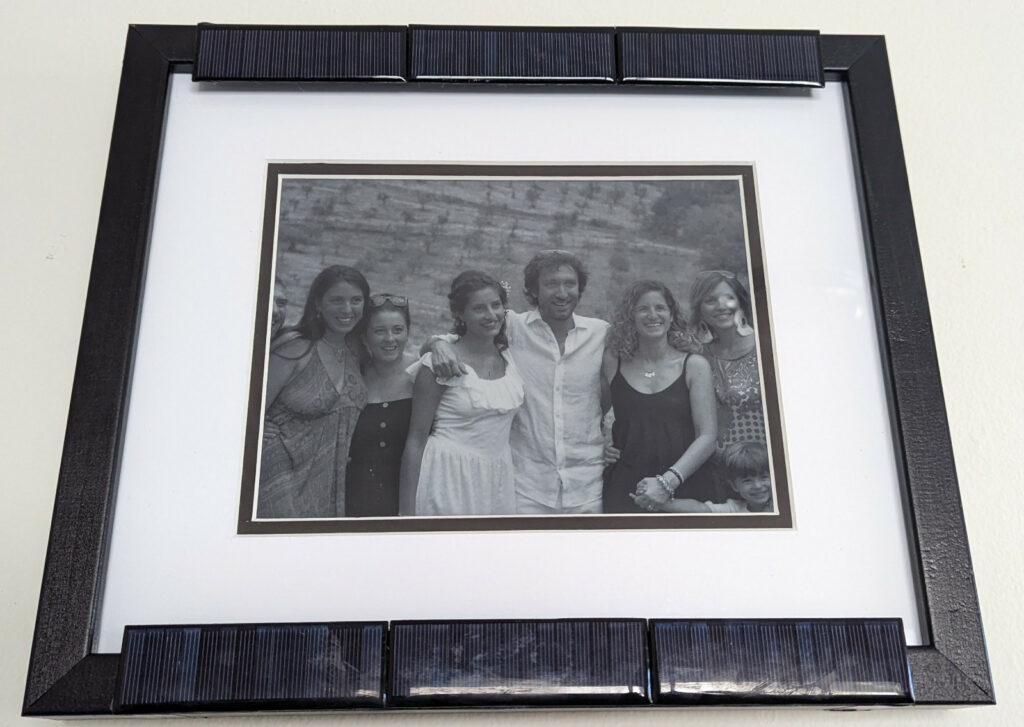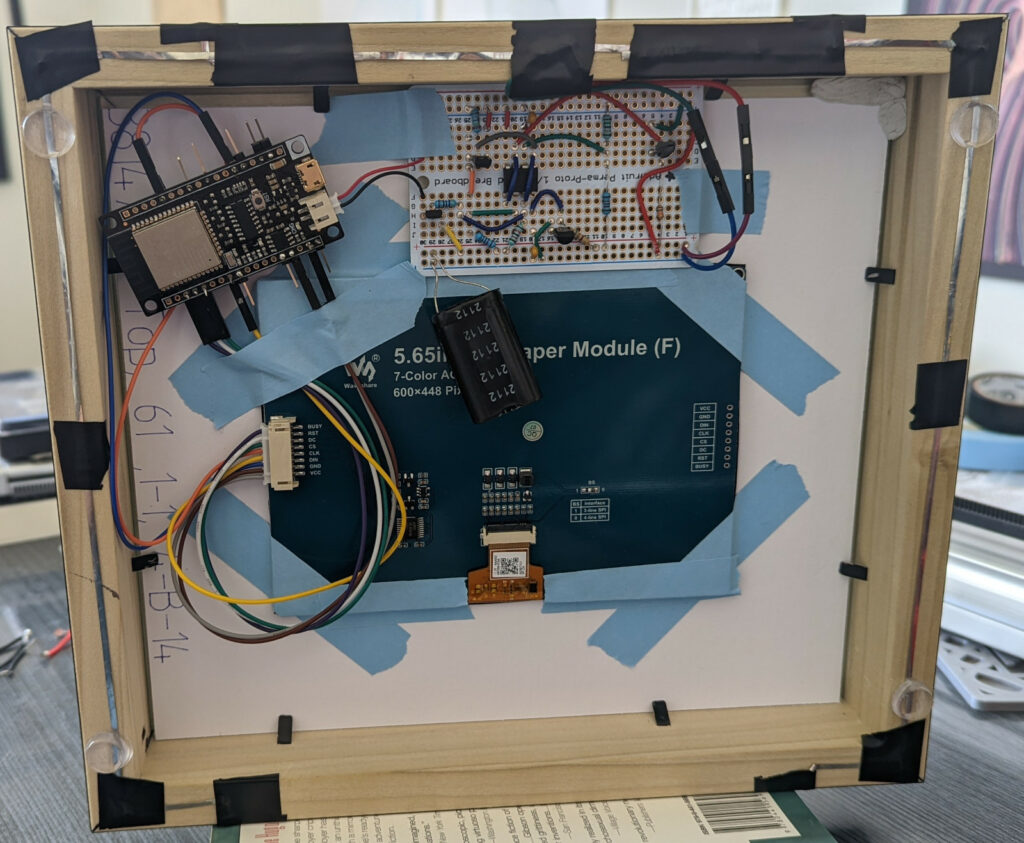It’s been over two years since I started tinkering with the idea of a solar-powered, ePaper digital photo frame. My first version was functional but had a number of issues that made me go back to the drawing board.
As a reminder, my goals were to build a digital photo frame that:
- Requires no electric outlet connection.
- Requires no form of maintenance. You put it up and it works “forever” (it becomes a heirloom device).
- Uses either open hardware and open standards or hardware and standards that are so common that it should be trivial to perform changes or updates “many years in the future”.
The biggest issue with version one was the battery. After a few hundred load/unload cycles, it went bust — as I expected. There are many projects and even commercial products out there using a larger li-ion battery than the one I used for my v1, some of which promise up to two refreshes a day, for an entire year, before needing to recharge the battery.
Many people would think that it’s perfectly acceptable for an object that for 99.9% of its life will just hang there and be beautiful. Many people are not me. I want my device to “be alive”. Refresh as much or as little as it can, following the cycles of nature (in essence: use as much light as the panels receive to power the device). And of course, there still isn’t a device quite like it out there, so bonus points for working on something novel.
Another issue with v1 was its wastefulness. A whole Raspberry Pi had to be powered and booted to perform the image swap. There really is no need for all that hardware to change a picture.
V2 fixes those two main issues. It does away with the battery, replaced with a big, fat capacitor. And the Raspberry Pi is now slimmed down to an ESP32 microcontroller. In a nutshell, the solar panels slowly charge the capacitor. When a certain voltage is reached, the circuit is opened, powering the ESP32 which boots a simple program that either downloads a photo from a server, or retrieves it from an SD card, and displays it on the ePaper screen. Shortly after the operation is concluded, the capacitor’s voltage drops below a certain threshold and the circuit closes, restarting the cycle.
This electronic black magic is called a solar engine.

V2 requires fewer solar panels, performs its duty faster, and can potentially keep doing its job for many, many years (super caps lifecycle is measured in millions of charge and discharge cycles). My first V2 prototype is now 2 years strong and everything looks in perfect shape.
So far I’ve built three different prototypes for V2.

Things seem to be working well. Granted, I’ve only tested this where I lived, sun-bathed places like California and Florida, where I can get multiple photo swaps a day even on a cloudy day (it remains paramount to pick a good spot for these frames, as close as possible to a window with good sun exposure). It probably wouldn’t work as well in Belgium or New Zeland, though even there the sun eventually comes out. And the beauty of this design is that you can forget about the device, until it astonishes you with a gorgeous photo that you didn’t even remember you took. Because, let’s face it, one of the curses of our age is being too busy taking pictures, and hardly having any time to watch them.
I’m now working on a higher resolution, larger 7-color screen. One thing I’d like to try out is to get power from an alternate source. Two candidates: inductive charging, or a spring charging mechanism, like grampa’s clock. It’s a heirloom, after all! On the software front, I’m cleaning up the server-side portion of the code, which automatically synchronizes with a media provider such as Google Photos or Flickr (arguably the part of the project which will become obsolete the fastest).
How much does it cost to build one of those? A good rule of thumb is that a decent wooden photo frame with non-reflective glass costs as much as an ePaper screen. So say you spend $100 for the frame, and $100 for the screen (plus control interface). Add about $50 for the ESP32, the panels, and the solar engine. You’re now at $250. Unless you value your time very low, you probably need to factor in just as much for the manufacturing process. There you have it, a $500 custom-made solar photo frame.
At that price point, limitations, and general level of interest, I doubt it makes sense to organize an effort to commercialize this type of product, even as a limited edition. One thing I can do, though, is to publish as much material as possible to enable anyone interested to build their own. I started doing so on this repo.
Something that would enormously simplify the task would be to produce a PCB with the solar engine connecting the solar panels and the ESP32. But even then, assembling everything together restricts this project to tinkerers comfortable with soldering irons, compiling ESP32 code, and generally getting their hands dirty.
Unless you know something I don’t, and you think every household should have one of these, in which case, please send me a message.




beautiful job.
Amazing work! Loved the concept of the solar engine. Would be curious to see if we could also procedurally generate some of the images 😀
That’s definitely possible. I’ve tried some combinations of generated glitch art, some of it intentional and some not, while testing the devices. If it got pixels, it can be displayed!
>> No need to insult me for the butcher job – I still can’t believe how well it works!
As a non-engineer who works with engineers, I strongly favor “butcher jobs” and other kludges, particularly for prototypes.
What do I abhor? Premature optimization. Engineers have wasted a lot of my time and money by engaging in premature optimization.
I agree with your presumption that almost certainly no market exists for this product at around $500. Nonetheless, using capacitors instead of batteries for very low powered applications (such as IoT) is obviously an intriguing idea with myriad use cases. I presume it’s already widely used, yet I hadn’t considered it. Thanks for the suggestion!
Really nice, I’ve been wanting to make an “infinite battery” screen like this but for something like displaying a list of groceries so this is nice to see it’s possible.
Have you thought about 3D printing a frame so that the solar panels are more flush with it and don’t stand out as much?
I did think of it and indeed made a mockup. 3D printed material never looks as nice as real wood with finishing, in my opinion, though that approach is great for prototyping. Just a few days ago I stumbled upon Exeger and its promising Powerfoyle material. Looks like Big E Ink is already on it: https://www.powerfoyle.com/news/exeger-and-e-ink-partner-to-develop-self-charging-epaper-devices/
To me, the most elegant way of re-doing the frame would be to coat the entire visible surface with this material.
Great work here, it could be useful to display also other info.
Where did you buy the epanel from?
They are pretty standard panels from Waveshare.
https://www.waveshare.com/
I think your idea is wonderful, and that every household should have one of these!
I was searching for just such a product and found this site. I’m willing to consider a purchase, and/or test a prototype in not-so-sunny Buffalo NY. BTW, I’m an electrical engineer and also willing to contribute more. You/we should be able to get rich from this; I’m shocked that no one has developed this as a commercial product yet.
Is v3 available? 🙂
I have been following your frame since V1.
I also happen to really like your Herzog-Zizek installation and some of your other artwork.
I have been looking for a solar-powered frame for quite some time. I know there is a company in Europe selling high-end frames, but they cost an arm and a leg.
In my case, I want to hang a frame outside my university office showcasing postgrad student research work. There’s a ton of foot traffic, and having the ability to showcase work without drawing power from the grid would be amazing.
I see your point about $500 being too steep for the consumer market. I wonder, though, if there’s not room for a collaboration with a third party who could help bring costs down. I could well imagine this as a kickstarter campaign. I’d definitely contribute if it came to that.
Thanks for pioneering this idea. I look forward to reading about v3.